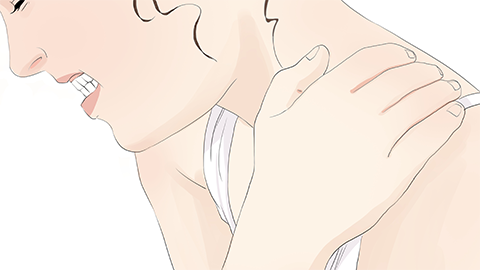What is the difference between shoulder fasciitis and periarthritis of the shoulder?
Generally speaking, although both fasciitis and periarthritis present with shoulder discomfort, they differ significantly in terms of affected site and nature, pain characteristics, range of motion limitations, susceptible populations, disease duration, and recovery speed. The specific differences are as follows:

1. Affected Site and Nature: Shoulder fasciitis primarily involves inflammation of the shoulder fascia, usually caused by repeated pulling or overuse of the fascia, with lesions concentrated in the fascial layer. Periarthritis, on the other hand, is an aseptic inflammation affecting the soft tissues surrounding the shoulder joint, often accompanied by adhesion of the joint capsule, resulting in a broader area of involvement.
2. Pain Characteristics: Fasciitis typically causes localized sharp or dull aching pain at a relatively fixed location. Tenderness is obvious when pressing on fascial attachment points, and pain may worsen with movement but quickly improves with rest. Periarthritis usually presents as persistent dull or throbbing pain that may radiate to the neck and upper arm.
3. Range of Motion Limitation: Patients with fasciitis experience mild limitation of shoulder joint movement, only slight restriction during specific motions, while most daily activities remain unaffected. In contrast, patients with periarthritis suffer severe restriction in shoulder movement, including difficulty raising the arm, abduction, and rotation in multiple directions.
4. Susceptible Populations: Fasciitis commonly affects individuals who maintain the same posture for prolonged periods or have excessive shoulder strain, occurring across a wide age range, including both young and middle-aged adults. Periarthritis predominantly affects people around 50 years of age, especially those with sedentary lifestyles, prior shoulder injuries, or endocrine disorders.
5. Disease Course and Recovery Speed: Fasciitis has a short course; with timely rest, local heat application, or physical therapy, symptoms usually resolve within 1–2 weeks. Periarthritis has a longer course, often lasting several months to one year, with slow recovery. Without timely intervention, some patients may develop worsening joint adhesions.
To prevent these conditions, it's important to avoid overusing the shoulder. Patients with fasciitis can prevent recurrence by adjusting posture and reducing strain. Those with periarthritis should adhere to moderate rehabilitation exercises such as pendulum swings and wall-climbing movements, while also keeping the shoulder warm to prevent symptom exacerbation due to cold exposure.




